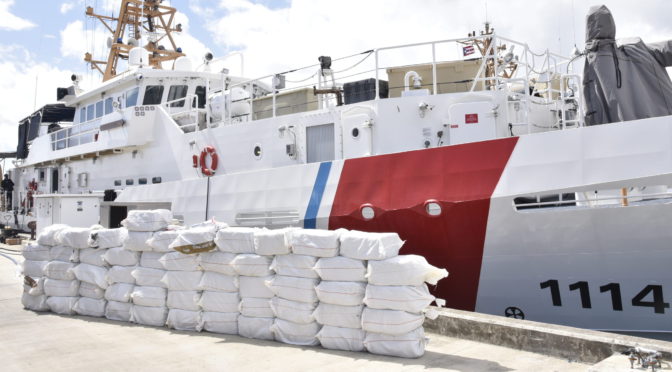By Dr. Ian Ralby, I.R. Consilium; Lt. Col. Michael Jones, The Caribbean Community’s Implementation Agency for Crime and Security (CARICOM IMPACS); and Capt. (N) Errington Shurland (ret.), Regional Security System (RSS)
While life on land for most people has been unusually sedentary in 2020 with significant travel restrictions and stay-at-home orders, the maritime space has remained remarkably active. Since the onset of the COVID-19 pandemic the Caribbean’s maritime domain has garnered widespread attention on three fronts: cruise ships stuck at sea, both with Covid-19 patients onboard and crew unable to be disembarked; a major increase in U.S. naval presence focused on countering narcotics trafficking, particularly via semi-submersible vessels; and shipments of sanctioned fuel and goods from Iran to Venezuela.
Though the region is being pulled into these issues to some degree, all three of these matters are primarily of an international nature. In examining the issues that are not merely occurring in the Caribbean but are of direct concern to the security, governance, and development of the region, the pandemic provides an opportunity for taking new approaches. By compiling comparative data from before and during the pandemic using maritime domain awareness technology and working collaboratively between states, regional bodies, and independent experts, we can bring to light previously overlooked activities and new criminal trends in the region. This new insight provides vital leads on how to reinvigorate maritime security and ensure that the waters of the Caribbean—among the most economically valuable in the world—are governed by states and not transnational criminal networks.
Caribbean Maritime Activity During the Pandemic
Between March and July 2020, the Caribbean saw an unprecedented decline in travel owing to the COVID-19 pandemic. In terms of air travel, over those four months the member countries of the Caribbean Community (CARICOM) saw only 4.7 percent of the arrivals and 9 percent of the departures they had seen the four months prior to the declaration of the pandemic.[4] Given such a dramatic drop in travel and tourism, combined with the well-publicized issues surrounding the health security of cruise ships, it would make some sense if the Caribbean also saw a dramatic decrease in maritime activity between mid-March and mid-July. Indeed, records indicate that from March to July 2020, the region saw 48 percent of the port arrivals of the November 2019-March 2020 timeframe.[5] Given this decrease in maritime activity, it would stand to reason that there was a comparable decrease in illicit maritime activity as well. That, however, does not appear to be the case.
Traditional Metrics
Even by traditional metrics of quantities seized, the decline in criminal activity between March and July 2020 did not parallel the decline in port calls. In that period since the onset of the pandemic, the region seized roughly 60 percent the amount of cocaine, marijuana, and illegal migrants that it did between November 2019 and March 2020.[6] Importantly, since early April, the increased presence of the United States Navy and Coast Guard in the region has accounted for more than $1 billion in drug seizures, potentially skewing the seizure figures for the regional states as well. The region, however, has not seen the sort of decline in traditional criminal activities that might be expected under the circumstances. In fact, there were 27 recorded incidents of maritime interdictions between March 12 and July 8, 2020, versus 23 in the longer period between 1 November 2019 and 11 March 2020.[7] Furthermore, seizures in the last few months of birds, goats, cash, and fuel (for some examples), indicate the diversity of smuggling operations running through the Caribbean. Economic hardship may in fact be a growing driver for illicit activity. But these recorded figures are not the only means by which to determine whether criminality has declined in parallel with legitimate maritime activity.
New Approaches
Using Automatic Identification System (AIS) data, a variety of other datasets, augmented intelligence, and machine learning, increasingly advanced maritime domain awareness (MDA) technology can help examine different maritime activities to identify anomalies and instances of suspicious behavior. Whereas maritime law enforcement in the Caribbean has traditionally focused on small vessels—go-fast speedboats, fishing vessels, and pleasure craft that are generally too small to use AIS—high-volume drug interdictions in other regions in the Caribbean have indicated that traffickers are increasingly using larger vessels for larger drug shipments. By using MDA technology that allows for queries on different activities, a variety of indicators can help shine a light on what has been transpiring in the region during the pandemic and in the time leading up to it.
Focusing on a few factors of potentially suspicious activity can help indicate whether the maritime space of the Caribbean has seen any significant change since travel restrictions began in March 2020. By honing in on vessels that either can be deemed “high risk” or “significant risk” based on algorithmic analysis of their movements, or that have corporate ownership and management structures that exhibit risk patterns, analysts can quickly concentrate on vessels that, based on their activities, are likely to have engaged in or currently are engaged in illicit behavior. Focusing on such vessels, and comparing incidents of dark activity, including drifting, sailing below three knots, changes in Maritime Mobile Service Identity (MMSI) numbers, meetings, and course deviations, helps paint a relative picture over time.
Each of these factors is tied to known criminal activities at sea. Dark activity, which is not limited merely to AIS signal loss, but intentionally turning off the AIS transponder, is prohibited under Chapter V of the Safety of Life at Sea (SOLAS) Convention. There are some circumstances, even in the Caribbean, where as long as this was logged by the master of the vessel, such activity could be deemed acceptable for the safety of the vessel. But it often is an indicator of illicit activity.
Ships that intend to engage in illicit activity—like meeting with another vessel to embark drugs, transship illegally-caught fish or violate sanctions—may turn off their AIS transponder to help obscure that behavior. Similarly, drifting and sailing below three nautical miles per hour are uneconomic behaviors for ships engaged in legitimate maritime commerce. While these indicators are not in and of themselves indicative of anything specific, they can suggest a vessel may not be acting legally, particularly if there are other risk factors present. Sailing below three knots may also be an indicator of either dropping off or seeking to pick up packages, often drugs, left in the water for collection. There may even be several days between the dropoff and pickup.
MMSI changes can be routine, but particularly when paired with other activities, can also indicate attempts to obscure either past or future activities. Furthermore, they can indicate changes in ownership and control of a vessel, and when such a change also includes a change in flag, there may be cause for concern as to the intentions of the new owners. Meetings could involve anything from bunkering or legitimate resupplying, to key transfers in a criminal supply chain. And finally, odd course deviations may also be indicators of uneconomic behavior that is tied to illegitimate activities—such as looking for geolocated drug packages left on the water for collection.
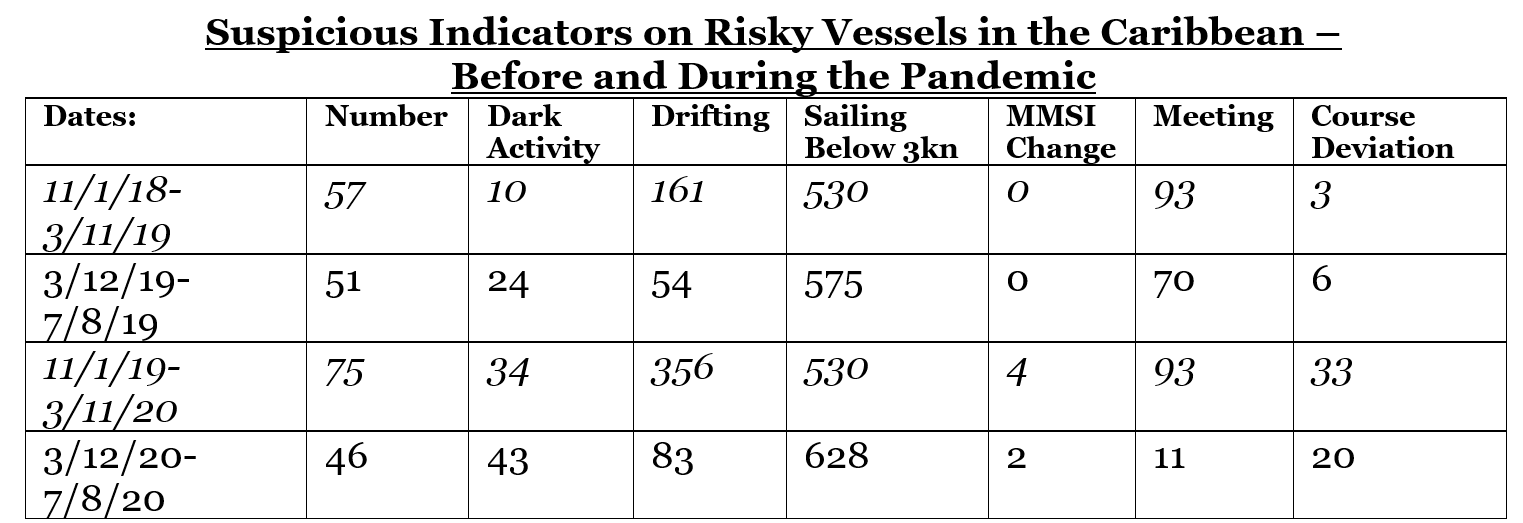
In looking at the Caribbean, the above chart—which excludes tankers on account of their unusual challenges caused by the decline in the global oil market—is quite telling as to changes in suspicious activity during the pandemic. Using the same periods from the traditional analysis mentioned earlier (November 1, 2019 to March 11, 2020 and March 12 to July 8, 2020), both from 2019 into 2020 and from 2018 into 2019, shows that there is not a significant decrease in suspicious behavior during the pandemic.
On the contrary, there is actually an increase in dark activity, including drifting, sailing below three nautical miles, MMSI changes, and course deviations in comparison to the same periods in 2019. The only decreases were a slight drop in the number of vessels and a significant decline in the activity in which no one is supposed to engage in during a pandemic: meetings. Compared to the four months prior to the onset of Covid-19 restrictions, there were actually more dark activities and slow sailings during the pandemic than there were before.
Comparing the pandemic period to the period immediately prior is most instructive when considering the traditional datasets above. If the volume of legitimate maritime activity dropped by more than 50 percent and the volume of movement by air dropped more than 90 percent, it would seem that the volume of suspicious maritime activities should have dropped a significant amount as well. Instead, the pandemic saw a 38 percent decrease in the total number of suspicious vessels, a 26 percent increase in dark activity, a 77 percent decrease in drifting, an 18 percent increase in sailing below three nautical miles per hour, a 50 percent decrease in MMSI changes, an 88 percent decrease in meetings, and a 39 percent decrease in course deviations compared to the period from November 1, 2019 to March 11, 2020.
One convenient narrative to explain the increase could involve more ships being stuck at sea, but only if drifting rather than dark activity had risen. While this data is not conclusive, it does indicate that suspicious maritime activity does not operate in correlation with changes in legitimate maritime commerce. As has been noted regarding drug flows, “criminals don’t waste a good crisis,” meaning that maritime criminality is relatively unimpeded by the restrictions that have curtailed legal activities during the pandemic, and criminals may actually be taking advantage of the new status quo. This is new insight and new visibility for the region and digging deeper exposes a number of trends.
Vessel Families
While there has been a push in recent years for maritime interdictions to trigger financial investigations in the Caribbean, perhaps more attention needs to be paid to vessel ownership investigations, either at the national or at the regional levels. If a vessel is arrested either within the region or after having been through the region with drugs onboard, it is possible the vessel’s owners and operators may have been involved. Therefore, one approach to identifying suspicious vessels deserving of scrutiny is to examine any sibling and related vessels, including vessels of associated companies. Doing so in the Caribbean would require the identification of a list of vessels of interest whose activities immediately raise suspicion.
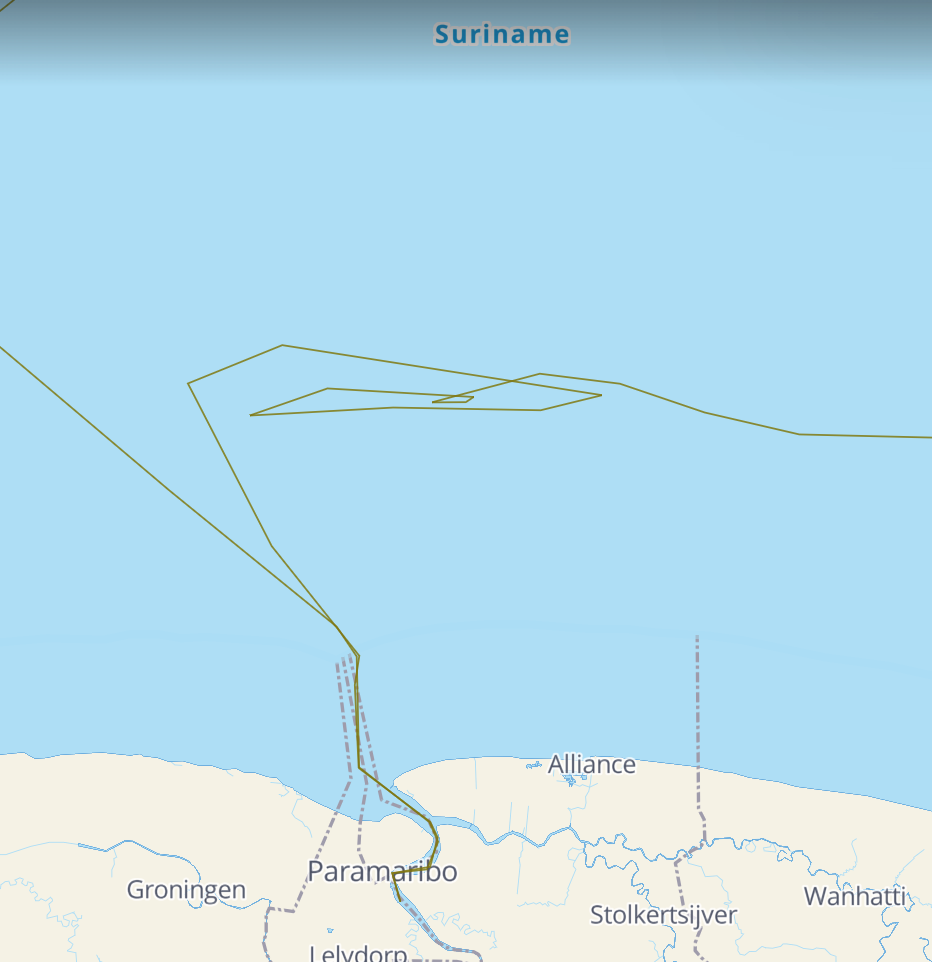
Reverse Routes
The news has been full of stories about Iranian vessels heading for Venezuela, especially owing to international sanctions. However, in examining the movement of vessels leaving the Caribbean after engaging in suspicious activity, some actually proceed onward to sanctioned countries.[8] At the same time, new routes are emerging, bringing drugs and other contraband from other parts of the world to the Caribbean. This deserves significant attention from the region.
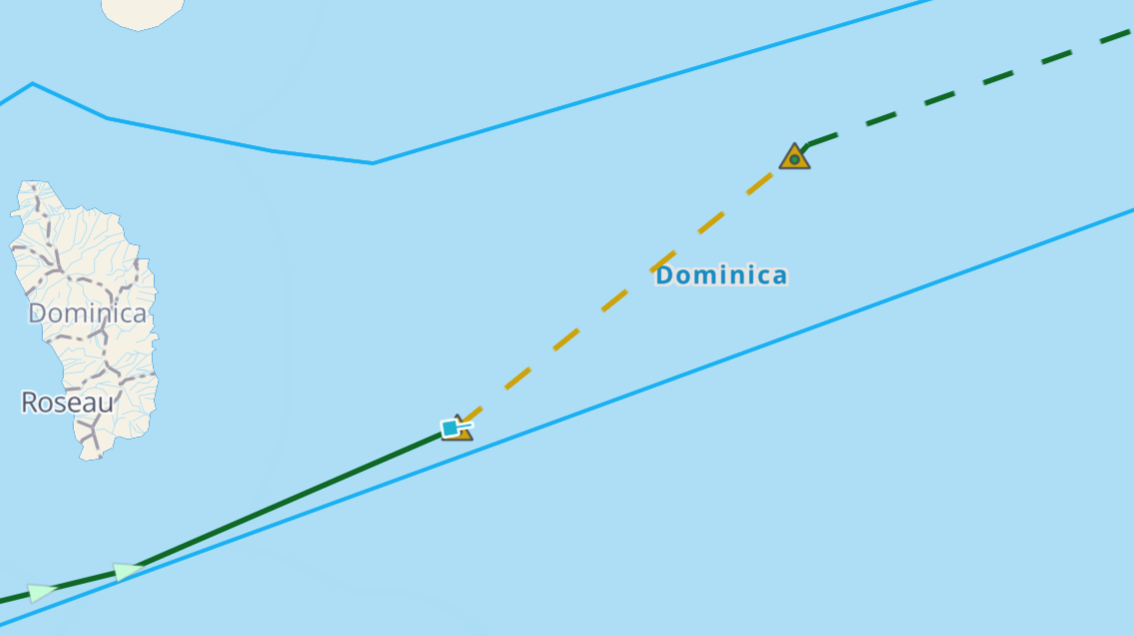
Unexpected Vessels
A traditional narrative that has been contradicted is the notion that illicit goods are moved only in certain types of vessels. The 2019 arrest of the M/V NIKA in Indonesia should serve as a cautionary tale. The NIKA is a cargo vessel that was engaged in illegal fishing, operating almost invisibly on account of its vessel type. No law enforcement agency was looking for cargo vessels conducting illegal fishing. Similarly, for the Caribbean, only searching for container ships may obscure possible suspicious patterns of activity which are also being exhibited by cement carriers, livestock carriers, or reefers which may be engaging in smuggling and trafficking.
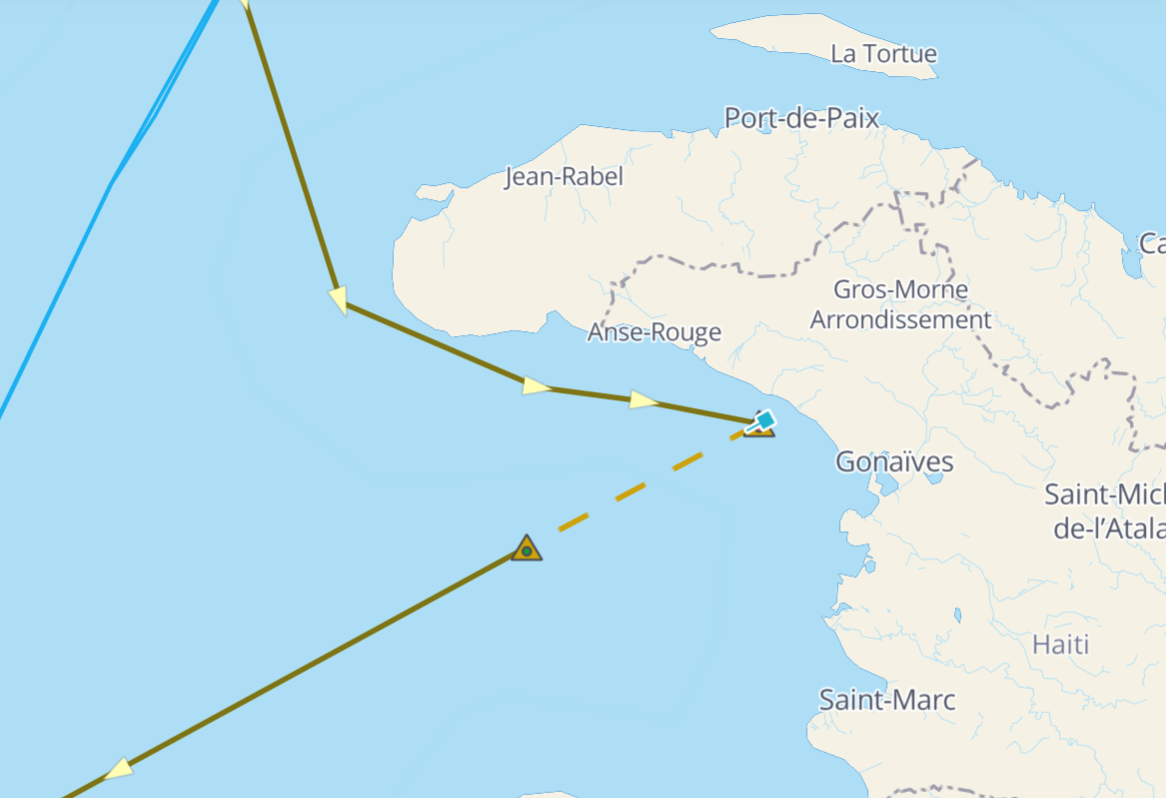
Next Steps
The pandemic has forced a revision of how Caribbean entities approach their analysis of illicit maritime activity. The present collaboration has allowed for increased insight into suspicious activities in the region that have otherwise gone unnoticed. The question, however, is how does the region act on this insight? The Regional Security System (RSS) —a sub-regional treaty-based security cooperation organization comprising seven states (all of which are also CARICOM member states)—is able to use a mixture of fixed-wing maritime patrol aircraft, small boats, and patrol vessels to monitor and interdict maritime crime. But even with these capabilities and extensive cooperation among the states, identifying these trends in such a way as to analyze and respond to them quickly enough to prompt on-the-water interdictions will be a challenge. Furthermore, the current concept of operations in the RSS and those of CARICOM member states are based on traditional understandings of trafficking routes and criminal modalities. As new insights enter the picture, new approaches need to be considered—both in terms of how to maintain such enhanced maritime domain awareness and in terms of how to respond to it.
What has become clear is that even while much of the world has been stuck at home during the pandemic, criminals have continued to operate in the maritime space of the Caribbean with virtually no detectable decline in overall activity. Just as criminals continue to adapt and innovate amid changing circumstances, so too must law enforcement. Since the pandemic has destroyed the familiar status quo, the states and regional entities of the Caribbean need to proactively reevaluate the range of assets and approaches that can be deployed to identify, understand, and effectively disrupt maritime criminal activity.
To keep pace with and ultimately get ahead of the criminals, CARICOM member states will need to explore a range of tools for addressing the full spectrum of illicit maritime activities. This includes using new technology such as maritime domain awareness platforms, enhancing operational cooperation through CARICOM IMPACS and the RSS, and both adopting and implementing legal instruments such as the Treaty of San José. While the pandemic has curtailed and thwarted many good things around the world, it somewhat ironically has helped catalyze this process in the Caribbean.
Dr. Ian Ralby is a recognized expert in maritime law and security and serves as CEO of I.R. Consilium. He has worked on maritime security issues around the world, and has spent considerable time focused on and was previously based in the Caribbean. He spent four years as Adjunct Professor of Maritime Law and Security at the United States Department of Defense’s Africa Center for Strategic Studies, and three years as a Maritime Crime Expert for the UN Office on Drugs and Crime. I.R. Consilium is a family firm that specializes in maritime and resource security and focuses on problem-solving around the world. I.R. Consilium has extensive experience in the Caribbean, having worked in the region for almost a decade. Dr. David Soud and Rohini Ralby of I.R. Consilium also contributed to this article.
Lieutenant Colonel Michael Jones is the Executive Director (Ag) of the CARICOM Implementation Agency for Crime and Security (IMPACS). He has an extensive career in project management and has been leading a number of border security initiatives since starting at the agency in 2011. He has also been a part-time lecturer in information systems and computer applications at the University of the West Indies, Cavehill. He has a Master’s in project management and evaluation from the University of the West Indies, Cave Hill, and a Master’s of research, University of Liverpool. CARICOM IMPACS is the legal entity within the Caribbean Community, with direct responsibility for research, monitoring and evaluation, analysis and preparation of background documents and reports, as well as project development and implementation of the Caribbean regional crime and security agenda. Tonya Ayow, Callixtus Joseph, and Chesley Olliverre of CARICOM IMPACS also contributed to this article.
Captain (N) Errington Ricardo Shurland (ret.) is the Executive Director of the Regional Security System (RSS). Prior to this, he served in the Barbados Defence Force for 33 years. He served in several operational and administrative posts, including as an advisor to the Barbados delegations, and negotiating the Maritime Boundaries and Fisheries Agreements with Guyana and Trinidad and Tobago. He holds a Master’s degree in Maritime Administration from the World Maritime University in Malmo, Sweden. The Regional Security System (RSS) is a seven-country, treaty-based cooperative security mechanism that focuses on maritime, air, and land security across its member states. Rolerick Sobers and Jeffery Forde of the RSS also contributed to this article.
Endnotes
[1] I.R. Consilium is a family firm that specializes in maritime and resource security and focuses on problem solving around the world. I.R. Consilium has extensive experience in the Caribbean, having worked in the region for almost a decade.
[2] CARICOM IMPACS is the legal entity within the Caribbean Community, with direct responsibility for research, monitoring and evaluation, analysis and preparation of background documents and reports, as well as project development and implementation of the Caribbean regional Crime and Security agenda.
[3] The Regional Security System is a treaty-based seven country cooperative security mechanism that focuses on maritime, air and land security across its member states.
[4] Data compiled by the Joint Regional Communications Center of CARICOM Implementation Agency for Crime and Security (IMPACS).
[5] Data compiled by the Joint Regional Communications Center of CARICOM IMPACS.
[6] Data compiled by the Regional Intelligence Fusion Center of CARICOM IMPACS.
[7] Data compiled by the Regional Intelligence Fusion Center of CARICOM IMPACS.
[8] Information gleaned from tracking vessels on Windward.
Featured Image: The crew of the Coast Guard Cutter Heriberto Hernandez (WPC-1114) offloaded 55 bales of cocaine weighing 1,375 kilograms at Sector San Juan July 22, 2020. (U.S. Coast Guard photo by Ricardo Castrodad)

